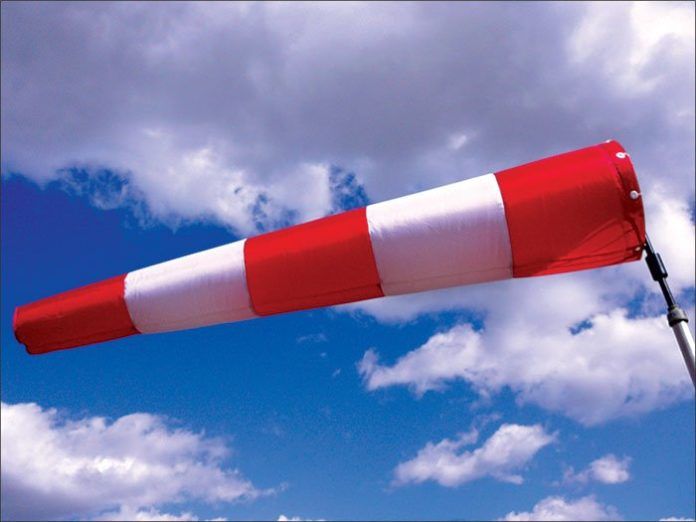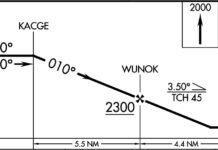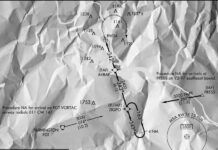Bob and I are flying back to Connecticut, IFR in his Cessna 182, after a fabulous experience with my first visit to Oshkosh. We depart with full tanks.
As the flight progresses, trouble looms. Our LORAN groundspeed (yep!) was low. I spin my whiz wheel (yep!) as the fuel needles creep ever lower. I had calculated our fuel consumption to OSH as 13.1 gph. At our present groundspeed, the LORAN, whiz wheel and I figure we will need gas about an hour short of destination.

Bob was not happy. “Why should we have to land for fuel? I made it home nonstop last time.”
I was incredulous. About the only response I could summon was a non-committal grunt. That was then, this is now. Bob is a mechanical engineer. Surely he must grasp the concept that wind is not necessarily consistent, but he certainly doesn’t seem to.
Wind? What Wind?
A prudent pilot is constantly aware of the wind, yet I frequently see cases where pilots are completely wind-ignorant. Bob is just one example in that he simply didn’t factor that day’s wind into his endurance calculations. Just hang out at your home ‘drome on a windy day and watch all the planes that dramatically drift toward or away from the runway while on downwind and ultimately undershoot or overshoot the turn to final. Precision flying simply demands wind awareness.
Recently, we’ve had one real and several almost-downwind landings at our local nontowered airport. An instructor decided to show his student the effect of a downwind landing. Unfortunately he overlooked the other, more predictable, traffic in the pattern making a normal landing into the wind. His cowboy antics nearly caused a midair and scared the daylights out of all participants. We had an airport tenant meeting to discuss the matter. I presume the CFI won’t do that again.
A nearby airport, also with no tower, is widely used by students and instrument pilots practicing its three approaches. The sole runway is 17-35; there is no AWOS. I often hear pilots fixated on a particular runway because they want to fly that runway’s approach, but they’re not planning a circle to the upwind runway. One day, when I heard two airplanes announce inbound for the downwind runway, I spoke up. Good aviation citizens look out for each other, so I told each aircraft that the wind favored the opposite runway. Yes, I was that guy, but they thanked me and switched to the correct runway.
One good way to stay ahead of your airplane is to monitor the CTAF, tower or AWOS from many miles out—20, 30 or more. CTAF can tell you the runway in use as pilots announce which runway they are using. But, if there’s no weather reporting, it’s worth confirming the wind through other means.
Wind comes first on the approach checklist because it is essential to selecting the approach to fly. Wind determines the preferred runway and only then does the runway selection let you decide on your preferred approach. Yet I see pilots receive the AWOS but not apply it. Some give it so little respect they don’t even write it down. If you copy it, you have time to think about it. Well, what should we think about?
Wind is Always with You
Wind figures into every part of a flight and becomes extra important for approach planning and execution, starting with intercepting the final approach course.
On a vector, ATC tries to give you a standard 30-degree intercept to a localizer (45 degrees to an airway), but quick, accurate vectoring is as much art as science. After a while, controllers get a feel for the wind and give better headings.
Being aware of the wind helps you be ready for its effects. Be sure to check your DG against your compass to assure you’re flying accurate headings. With a tailwind blowing you onto final, ATC may give you a shallower intercept to give you more time to react. Into the wind, you might get as much as a 45 degree intercept. If you’re given a vector that you can tell won’t work, it’s best to ask for another before problems develop.
Once vectored for intercept you should watch for the localizer needle to come alive. Four times more sensitive than a VOR, it will move quickly. Rolling out on final, be wind smart—if you expect winds, adjust your heading accordingly. Aggressive winds call for aggressive corrections, especially at lower speeds. During the intercept, you should react quickly and definitively; if you get blown through final, full deflection becomes a real possibility, and it can be difficult or even disorienting to save, especially near the FAF.
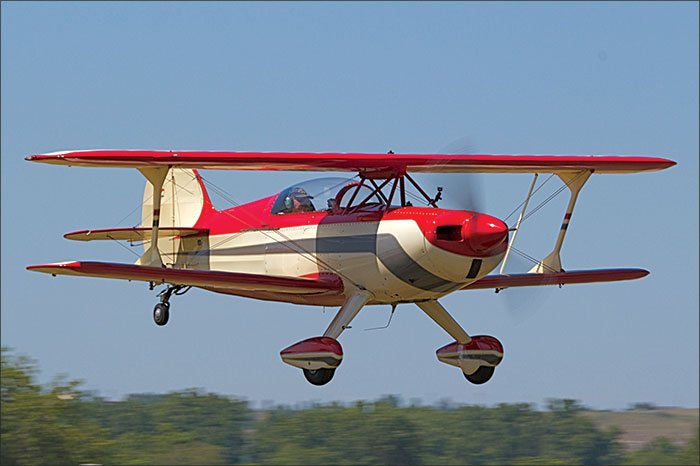
According to AC 90-108 Paragraph 8.c., “An otherwise suitable RNAV system cannot be used for… lateral Navigation on LOC-based courses (including LOC back-course guidance) without reference to raw LOC data.” So you at least need raw localizer data visible while intercepting. Practical guidance tells us it must be the primary reference inside the FAF. You can certainly display the RNAV course elsewhere, though.
If you’re a ways out it can make sense to intercept the final approach course using GPS guidance, particularly with EFIS. Just make sure you do have localizer raw data displayed somewhere. A quality combination of autopilot and GPS knows the wind and it will typically make a smoother intercept. Even the most sophisticated system, however, won’t transfer that wind correction to navigation on the localizer, where the autopilot must learn about the wind all over again only from the error of first being blown off course.
Flying a Windy ILS
GPS can give you an idea as to wind simply by noting the groundspeed change as you fly different headings. An EFIS will show you a wind vector in several formats, but you should pay particular attention to the head/tailwind and crosswind components, not just the overall wind.
Your groundspeed can help you fine tune your standard power setting. Multiply your groundspeed by five to get the required descent rate on an ILS. At 90 knots that means 450 fpm. At 80 knots (groundspeed) into a headwind, figure 400 fpm and a bit more power. (Alternatively, add zero to your groundspeed and halve the result: 120-knot groundspeed requires 600 fpm and 100 knots needs 500 fpm. It’s the same math.)
Let’s say you’re at your precision approach power setting of 1800 RPM in a Cessna 172SP. If you are consistently below glideslope, you have a headwind—which you should know from advance planning and confirm by the reduced groundspeed—and need more power. With a tailwind, you naturally need less power.
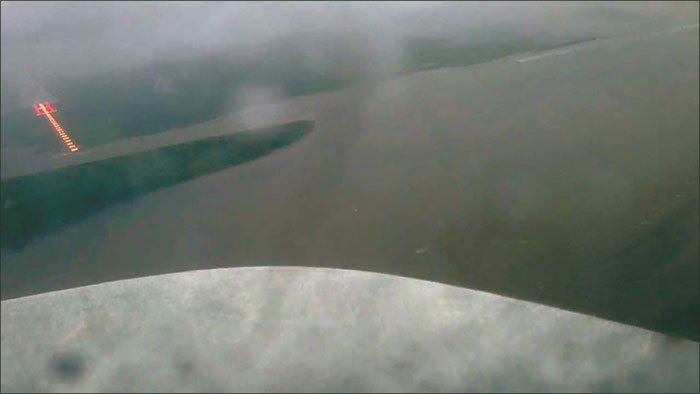
Wind velocity and direction change at lower altitudes, with the wind speed typically decreasing as you descend to the runway. The sweet spot is when you have your desired speed and descent rate nailed and the needles remain centered. Then trim to make the airplane do the work, hands off. Trim is your friend. Power changes necessitate trim changes, and trim is a more precise control than power. It all goes hand-in-hand with each parameter affecting the others.
Of course, you’ll need to find a heading to keep the localizer centered. Here is where a heading bug is invaluable. Start with your best guess, then correct the bug as needed to keep the needle centered, continuously just flying the bug. Inside the FAF, corrections should be smaller, typically just a couple degrees, especially if you’ve found the sweet spot outside the FAF.
Think about this: If you fly the localizer and/or glideslope needles directly you are behind by definition, and you will never really achieve a stabilized approach. Find a descent rate and heading that works. Trim for the descent and fly that heading. Anticipate changes.
Shifting, or even gusty winds are part of flying an ILS. In the mountains, canyons make their own winds, vortices and drafts. Smooth air is rare. An ILS may be your only choice due to the ceiling or perhaps it’s the only approach. This can be especially fun if you have to fly it with a tailwind.
A tailwind pushes you along faster, demanding an increased descent rate to stay on the glideslope. Mitigate this with a slower speed, when practical, and increased drag—flaps and gear—to help fly this steeper approach. Your time from the FAF to the MAP is reduced if groundspeed is higher. DH remains the same on the ILS but consider moving the non-precision VDP further from the threshold. No published VDP? Divide the published height above touchdown zone at MDA by 300 to get the standard distance in nautical miles to the runway with a three-degree slope. If the runway is slippery, slowing down early saves runway, brakes and tires.
Circling
Some pilots will hear someone in the pattern and/or get the AWOS, then fail to absorb the implications. If we are shooting the ILS 8, yet traffic or wind favors runway 13, too many pilots trudge on, trapped in the mindset of landing on runway 8. Psychologists call this “plan continuation bias.” Once a course of action is set, changing it becomes difficult. Even if some do-gooder (like me) points out that the wind favors a different runway, many again fail to apply this information. Some will still continue while others may recognize the need to circle, but don’t reevaluate the approach to revert to circling minimums. Circling at DH is not a good plan.
A circling approach is one of the more challenging maneuvers we do in instrument flying, at low altitude, with steep turns, in bad weather, sometimes at night and with constantly changing wind as we circle. Distance from the runway is deceiving because you are flying lower than pattern altitude which tends to put you closer to the runway, forcing tight base and final turns. An oft-quoted ICAO study says that circling is 25 times more dangerous than a straight-in approach.
Consider landing downwind instead of circling. But, beware. A 10-knot tailwind will double your landing distance. If the runway is slippery or wet, be sure you’ve got even more runway yet.
Many accidents are caused by trying to save the landing. Don’t force a touchdown that will run long on a short runway. Don’t be reluctant to go around. It’s far better to explain the go around to your passengers than to explain the overrun off the end or side of the runway. Given strong crosswinds, plan an early go-around if your needles start looking like they are having a swordfight despite your best efforts.
All that said, landing or departing with a tailwind is not necessarily unsafe. Airliner manufacturers typically permit a ten or even 15-kt tailwind. The Cessna 172S POH mandates increasing takeoff distance 10% for every two knots’ tailwind up to ten knots, increasing takeoff distance by 50%. Consult your POH.
What? No Wind?
Incongruously, one of the most dangerous times at a nontowered airport is when there is no wind. An ASRS report exemplifies what can happen when theory and fact collide.
Calm winds prevailed on the VFR biplane’s arrival at KSPB in Scappoose, Oregon. The pilot followed the flow and landed Runway 33 and refueled. Knowing the calm wind runway was Runway 15, the pilot taxied to 15. A good aviation citizen, he announced that with calm winds the preferred runway was 15 twice as he was holding for Runway 15.
Inbound traffic then started announcing pattern entries for 15—clearly, the biplane pilot had been heard. He then announced his departure on 15 and took off. A low-wing pilot who had fueled just ahead of him had not responded. The biplane pilot assumed he was holding on 33 and heard his intentions.
Bad assumption. On rotation the biplane wisely sidestepped to the right of the runway about 50 feet just as the low-wing came into view rolling on 33. The low-wing pilot saw the biplane and sidestepped to his right. The biplane pilot estimated that they missed each other by at least 250 feet. In his words, “The low-wing aircraft was not using his radio which led to the event and was not following local procedure to use [the] calm wind Runway 15.”
There are four takeaways from this incident. First, we tend to follow the leader as the biplane did on landing where Runway 33 was in use and the windless day favored Runway 15. Other things equal, it’s best to go with the flow.
Second, ignorance was involved. The biplane pilot taxied to the correct runway, advised airborne traffic of the correct runway, and they complied. The low-wing pilot departed on Runway 33, presumably without this information.
Third, the low-wing aircraft failed to use CTAF communications procedures, placing him out-of-step, awaiting departure on 33. He wasn’t talking to anybody so he likely wasn’t listening either.
He was departing IFR. It’s plausible that he was coordinating his departure with clearance delivery or was on the departure control frequency instead of the CTAF. This can happen when IFR pilots get ahead of themselves. Maybe he had the CTAF tuned into the secondary frequency but forgot to swap it. Regardless, these are potentially serious lapses.
Fourth: Bad things can happen when procedure isn’t followed.
Finding the calm wind runway is an uncertain proposition. Buried in the airport remarks section, the A/FD for my nontowered airport says, “Preferential runway 3-21 conditions permitting.” The A/FD contains no similar notation for KSPB, yet the biplane pilot had local knowledge other pilots lacked.
Mind the Wind
Winds govern every aspect of our flights, from departures through enroute planning to approach and landing. Awareness of the wind and its effects becomes critical on approach and landing, influencing every decision from approach and runway selection to how we’ll intercept and fly the final approach.
Oh, Bob? Well, after we discussed it further he accepted that we’d need fuel, so we diverted to Poughkeepsie, New York. There we discovered a slight fuel leak that, with the headwind, made the unplanned stop necessary. He’s now acutely aware of the wind effects on his flying.
Fred Simonds regularly flies the fickle Florida winds as an active CFII. See his web page at www.fredonflying.com.

